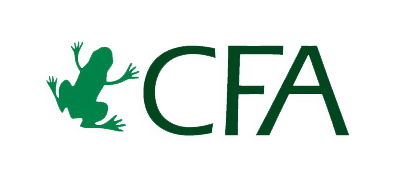Welcome to the Conservation Finance Guide. The overall goal is to provide practical tools to support the rapid expansion of sustainable finance mechanisms that generate long-term funding for biodiversity conservation.

Welcome to the Conservation Finance Guide. The overall goal is to provide practical tools to support the rapid expansion of sustainable finance mechanisms that generate long-term funding for biodiversity conservation.

Reporting on fee revenues is critical to long-term success and transparent revenue collection and distribution. Many PAs publish visitor numbers online – especially when there is a revenue-sharing system with the local community. Not only does this reporting build trust and support among tourists, local communities, and other stakeholders, but it can also potentially influence public policy on PA tourism and conservation finance. Consistent and detailed reporting on PA revenues can demonstrate the importance of PAs to national economies, thereby justifying their national and international support, and more broadly strengthening the argument for conservation (Eagles 2002; Rylance, Snyman & Spenceley 2017).
Transparent communication of how revenues are used is critical for gaining public acceptance of a fee system (see US National Park Service for a good example). It is particularly important that visitors trust the fee collection institution and understand how revenues contribute to conservation (Font, Cochrane & Tapper 2004). Information can be advertised on websites, social media, signage, and interpretive materials on site (Spergel & Moye 2004). This trust and awareness has been shown to positively influence WTP, particularly among divers in marine parks (Baral, Stern & Bhattarai 2008; Peters & Hawkins 2009; Uyarra, Gill & Côté 2010).
Retention of revenues by PA management authorities, rather than channelling them through a central treasury, can be critical for the sustainability of revenue streams and maximizing recovery of PA costs from tourism, because it protects revenues from being used for other government activities, or delayed by government accounting and budgeting processes, and it provides managers with an incentive to collect fees in an efficient manner (Lindberg 2001; Summers 2005; Rylance, Snyman & Spenceley 2017; Leung et al. 2018). When legislation prevents government PA agencies from retaining and reinvesting revenues (as in most LAC countries; Bovarnick et al. 2010), they are instead sent to a central treasury and earmarked for redistribution to the budget for PA systems, but since budget allocations tend not to reflect financial returns from tourism, PA managers may lack motivation to collect fees in an efficient manner (Eagles 2002). Evidence for this can be seen in Sulawesi’s Bunaken National Park where, although required by law to charge entrance fees, managers did not charge entrance fees for the first decade of its existence – largely due to legislation that required all revenues to be channelled to the central treasury (Emerton, Bishop & Thomas 2006; UNDP 2012). Entrance fees were not fully implemented until legislation was passed at the provincial level, following decentralization, to reserve 80 percent of entrance fee revenue for the MPA itself. The remaining 20 percent is distributed across local government authorities. In countries with insurmountable legal restrictions on the generation and retention of revenues by government entities, it may be necessary to create a parastatal agency, or contract with a private partner, for more flexibility in fee management (see 2.3.1).
Use of fees to enhance the quality of the site where they were collected is also a factor in the acceptance of fees by visitors and tourism operators (Lindberg 2001; Spergel & Moye 2004). It has been argued, for this reason, that revenues should be at least partially retained by the individual PA or site where fees are collected (Eagles 2002; Lindberg 2001) – as they are in Bonaire National Marine Park and Bunaken National Park (DCNA 2014; UNDP 2012). However, within PA networks there are often PAs that do not generate significant revenues from tourism and thus require support from other more popular PAs – see Ezemvelo KZN Wildlife (EKZNW), KwaZulu-Natal’s wildlife agency (Motau & Wale 2016). In these circumstances, the majority of revenues may need to be retained at the PA system level for overall conservation benefit.
A business plan for a fee system should be consistent with any existing PA management and business plans, and include the following elements:
Background
Review of the existing tourism assets and historical visitation rates
Opportunities for enhanced tourism assets and sites
Tourism demand – including comparative pricing study or WTP study
Legal and regulatory framework
Infrastructure needs
Desired ecological and social outcomes
Management needs – including ticket sales, fee collection, accounting, marketing, communication, stakeholder engagement, monitoring and evaluation
Financial costs and benefits
Use of revenues
Implementation timeline
Overview
1. Understanding Entrance and Activity Fees
1.2 Stakeholders
1.3 Potential in Monetary Terms
1.4 When is it Feasible and Appropriate?
1.5 Strengths, Risks, and Challenges
2. Methodology
2.1 Scoping
2.2 Feasibility
2.3 Design
2.4 Implementation
2.5 Monitoring, Evaluation, and Adaptive Management
3. How to Improve the Impact of Existing Systems
Appendix: Generic Terms of Reference (ToR) for a Feasibility Assessment